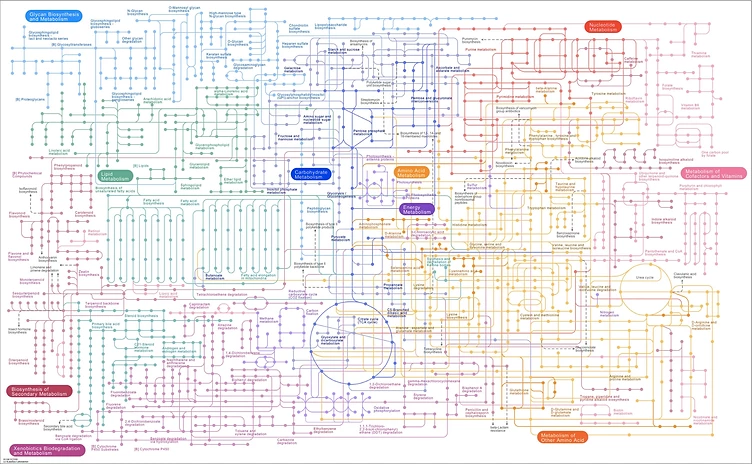O Canada! O Canada! Let’s talk about your food guide.
Today’s blog I will be reviewing Canada’s Food Guide is in collaboration with Andy the RD (Andy De Santis RD MPH) who also has a degree in food humour. After you’re done here, go check out his critique of the Aussie food guide (fondly known as the AGHE) here.
Whilst you’re at it, check out Andy’s website and follow him on Instagram where he displays his unshakeable adoration for kale and a solid meme or two.
There’s always more to learn and improve upon when it comes to food guides, and why not look across the Pacific to see what we can do better with our own.
Canada’s Food Guide is a very vibrant visual guide to healthy eating, which passes and surpasses what you would expect from a food guide given to a population. I’ll be summarising, what I liked about it, what could be improved and how Australia could borrow a few things from the Canadians when it comes to developing a practical and holistic food guide.

Here’s what I really loved about Canada’s Food Guide:
Eat the Rainbow
We dietitians are always preaching about including different colours to get a variety of essential nutrients into your body (plus it also looks pretty!). The guide encourages at least one green and one orange fruit or vegetable in your diet everyday, which I love! A guideline that is sorely lacking in the Aussie guide. This encourages Canadians public to reach their vitamin & mineral requirements including folate, vitamin K – from dark green vegetables – and beta-carotene or pro-vitamin A – from orange fruit and veg.
The rainbow theme really carried throughout the guide and made it cohesive. It also makes it simple for children to learn and follow too! The rainbow also showed the proportion in which these foods should be included in the diet (mostly fruit and veg, then grains, then dairy and then the protein-rich foods).
I really do nod my head at the emphasis on fruit and veg in Canada’s food guide, pretty good, ey?
Serves
All the serving sizes for all ages (except pregnancy and lactation) are displayed on the one page making it a resource simple for the whole family to use. Australian guidelines are sub-divided into lifestages, again more challenging in a family setting.
Fats
Canada’s guide gets real nitty-gritty with the amounts (and types) of fats recommended for health. Something that I feel the Australian guide does truly lack. It can be difficult for someone to translate a gram recommendation into liquid volumes, especially when encouraging unsaturated oils.
Plant-Based Focus
I applaud the focus on plant-based protein sources in Canada’s guide. With a lesser focus on fish, seafood, poultry and lean meat, reflecting the importance of including plant-based protein sources in the diet and ties in with the WHO recommendations about reducing red meat consumption.
Milk & Alternatives
The guide highlighted the importance of calcium-fortified milk alternatives, specifically soy which is better matched to dairy for protein content compared to other plant-based milks. However, if you don’t tolerate soy or dairy products (just like the Aussie guide) there are a few options for you, according to the guide, – which there definitely are great calcium-rich options out there that provide you with sufficient calcium.
I absolutely love the inclusion of kefir as a contribution to dairy serves, this has probably been popular in Canada for a long time, however, kefir is relatively new on the market in Australia. And with the gut health movement, including a probiotic-rich food in the guide reflects the food market more accurately.
The other aspects of the guide that I liked were:
- The focus on food preparation and cooking methods – often the way foods are prepared can influence their nutritional value greatly and is often overlooked in food guides. For example, a roasted potato with olive oil versus deep fried potato (fries or hot chips, as we call them here in Australia).
- Practical and skill-building advice such as label reading – separated in the AGHE
- Inclusion of nutrition throughout lifecycle as a summary, I particularly liked being a good role model for your child in terms of nutrition and activity (so, so important!) and the specific recommendations about supplementing in pregnancy
- Including physical activity guidelines and ways to reduce sedentary time
- The focus on small and sustainable steps
- Incorporating mindfulness and the importance of the social aspect of food – I wish every food guide included these ones!
What about what Canada can improve on?
Skewed Serves
In my opinion, I think combining fruits and vegetables into one category can cause easy misinterpretation by the public. 8-10 serves of fruit and vegetables could mean that someone eats 9 serves of fruit and 1 serve of veg and be classified as “meeting recommendations”.
I think I’m not alone in saying if someone ate this way, we dietitians wouldn’t classify this as the optimal way to eat for health. Vegetables should always be the foundation, and that’s where the focus should be for every country, and now that we know there is more benefits the more veg we eat (even over the recommended 5 serves), there should be no limit to veggie serves!
Mysterious Measures
The serving recommendations are included in millilitres including for solid foods? Canada, please explain! Are we liquefying everything from breads, fruit and vegetables? This type of measure is both odd and quite impractical. Grams for solid foods, millilitres for liquid foods (juice, milk etc) and a household measure seems appropriate.
What about the over 70s?
Canada’s guide lacks any different recommendations for people aged over 71 years (compared to those over 50), even though as you age, energy needs are reduced and increased focus on preservation of muscle mass through protein intake is needed and should be reflected in the recommended serves of foods.
Overall, there was little information provided about “extra” foods or discretionaries, just that they should be limited due to sugar, sodium or fat content.
The recommendation for vitamin D supplements for anyone over 50, whilst we know that vitamin D status is critical to maintain throughout life for preserving bone and aiding calcium absorption. I feel that supplements should be individualised and involve a discussion with your healthcare team to determine what’s right for you. I anticipate that in a Canadian winter, vitamin D may be a bit too tricky to come by and therefore widespread supplementation isn’t necessarily a bad idea from a public health perspective!
What about the pregnant and lactating mummas?
Guidelines about pregnancy nutrition were also a bit overly broad, recommending extra servings of core food groups, however these are not specific as to which foods to include. However, there has been evidence showing there is no requirement for extra caloric or energy intake during the first trimester of pregnancy, only in trimester 2 and 3.
And similarly, no specific recommendations for lactating women despite increased needs of key vitamins and minerals as well as energy! Breastfeeding is an energy-demanding task that requires nutritional support from an adequate diet.
Clip-Art vs. Life-Life Pictures
On an aesthetic note, whilst the clip-art style of images provides consistency across the food guide in terms of its “look”, it also makes it difficult to actually use as a tool as a dietitian to recommend servings like the Australian guide which features life-like real deal food photos.
Don’t Forget the Wholegrains
I think recommending, “at least 50% of grain products should be wholegrains” is a tad conservative. Ideally most, if not all, grain products should be wholegrain or a higher-fibre variety wherever possible – with most people not getting enough dietary fibre or reaching wholegrain targets, key to the promotion of satiety and also used for weight management, as well as promoting bowel health. The benefits of wholegrains are well-studied and this should definitely be reflected in any nation’s food guides in a culturally appropriate manner.
Is it translatable?
Food guides are all about providing practical recommendations to the population to implement to follow national dietary guidelines. But how does that translate to a meal or a plate of food? I feel this is something that Canada’s Food Guide is sorely lacking. Although, numerous countries need work on this, including Australia!
Overall I think that Canada’s Food Guide provides an holistic approach to healthy eating which is simple to follow and focuses on skill-building and empowers people to make better lifestyle choices in a sustainable manner.
There’s definitely a number of key aspects Australia should consider borrowing from our Northern Hemisphere friends, including the focus on colourful plants and an increased focus on a plant-based approach as well as a document that summarises recommendations for all ages.
However, for Canada, forming the fifth food group by splitting fruit and vegetables and more specific guidelines around discretionary foods (such as serve sizes or allowable amounts for more active people in the population) would be helpful.
I feel that a visual 1-page visual summary for use on a population and public health level rather than the 6 pages of rainbow goodness that it currently is (although our dietary guidelines take up a whopping 200 + pages, so how can I talk?)







